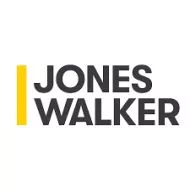- within Finance and Banking topic(s)
- with readers working within the Banking & Credit industries
- within Finance and Banking topic(s)
- with readers working within the Technology industries
- within Insurance, Law Practice Management and Privacy topic(s)
The banking industry's relationship with cryptocurrency has undergone a dramatic transformation. Major financial institutions that once dismissed digital assets are now developing stablecoin offerings, raising important questions about the future of traditional banking services and consumer protections.
Policy and Regulatory Context
This transformation accelerated following the Trump administration's January 23, 2025 Executive Order titled "Strengthening American Leadership in Digital Financial Technology," which launched a comprehensive review of US digital asset policy. The administration reversed the previous "regulation through enforcement" approach, with the SEC dismissing numerous cryptocurrency enforcement cases and federal banking regulators unwinding guidance that had effectively prevented banks from engaging with digital assets. The policy shift culminated during the congressional "Crypto Week" in July 2025, when multiple pieces of digital asset legislation advanced with bipartisan support.
Stablecoin Regulatory Framework
Unlike volatile cryptocurrencies (such as bitcoin), stablecoins are digital assets pegged to the US dollar, designed to maintain stable value. The Guiding and Establishing National Innovation for U.S. Stablecoins Act (GENIUS Act) was signed into law July 18, 2025, creating the first comprehensive federal framework for stablecoin regulation.
This legislation, which passed with strong bipartisan support (House 308-122, Senate 68-30), requires stablecoin issuers to maintain one-to-one reserves of US Treasury bonds, US dollars, or other high-quality liquid assets equal to the total value of coins distributed. Under this system, customers exchange cash for stablecoins, which can be used for digital payments, international transfers, and other transactions. The funds received by stablecoin issuers must be invested in virtually risk-free government assets, with the issuers keeping the interest earned as their primary revenue source. The GENIUS Act explicitly prohibits stablecoin issuers from providing customers with interest on their holdings, unlike traditional bank accounts.
Implications for Traditional Banking
Deposit Base Impact
Perhaps the most significant concern for community banks is how widespread stablecoin adoption could affect traditional deposit relationships. When customers place funds in stablecoins rather than in checking or savings accounts, those dollars cannot be used for lending activities. This reduces a bank's deposit base and lending capacity, potentially limiting its ability to make home or business loans within the community.
Consumer Protection Differences
Traditional bank deposits benefit from comprehensive consumer financial protections, including automatic federal deposit insurance up to $250,000. Stablecoins do not carry the same protections. If a stablecoin fails, there is no government backstop to protect customer funds, creating potential risk for consumers who may not fully understand this distinction. While some stablecoin issuers hold their reserves in FDIC-insured bank deposits, the stablecoin itself is not an FDIC-insured product.
Regulatory Oversight
While the GENIUS Act provides regulatory clarity, the stablecoin framework introduces a new oversight model compared to traditional banking products. Banks that issue stablecoins are still regulated by their existing primary federal regulators (the OCC for national banks, Federal Reserve for state member banks, and FDIC for state nonmember banks), but the GENIUS Act designates the OCC as the primary regulator for nonbank stablecoin issuers, creating a parallel regulatory structure alongside traditional banking supervision.
Historical Context
The historical context of "wildcat banking" from the 1800s provides relevant perspective. During that era, hundreds of state-chartered banks issued their own currencies, leading to widespread fraud and bank failures. The system was only stabilized through the creation of uniform national banknotes issued by federally chartered institutions under the National Bank Acts of 1863 and 1864.
Some industry observers worry that the proliferation of individual bank stablecoins could re-create similar challenges, although the GENIUS Act's reserve and oversight requirements are designed to prevent such outcomes.
Broader Regulatory Environment
The broader regulatory environment has shifted significantly. The SEC launched its "Crypto 2.0" initiative and announced "Project Crypto" to modernize digital asset regulation. The Commodity Futures Trading Commission (CFTC) initiated efforts to enable spot crypto trading on regulated exchanges. Meanwhile, the OCC has confirmed that national banks and federal savings associations may provide custody services for crypto assets and execute crypto transactions at the direction of customers, and the Federal Reserve announced the end of its novel activities supervision program for bank cryptocurrency activities.
Strategic Considerations for Community Banks
While community banks are unlikely to develop their own stablecoins, they should consider several strategic implications:
Competitive Dynamics: As larger institutions launch stablecoin offerings and the regulatory environment becomes more permissive, community banks may face pressure from customers seeking digital payment alternatives. Understanding these products will be essential for customer education and retention.
Partnership Opportunities: Some community banks may choose to participate in broader stablecoin networks or accept stablecoins issued by consortium arrangements rather than developing independent offerings. Reports indicate that several major US banks are exploring joint stablecoin issuance.
Customer Education Requirements: Banks should be prepared to explain the differences between traditional deposits and stablecoins, particularly regarding consumer protections and FDIC insurance coverage.
Deposit Base Monitoring: Banks should monitor whether customer migration to stablecoins affects their deposit base and adjust business strategies accordingly.
Market Scale and Growth
Current market data indicates stablecoin circulation has grown to approximately $250 billion, facilitating $20-$30 billion in daily transactions. Industry projections suggest potential growth to $400 billion by year-end, though such forecasts should be viewed with appropriate caution given the nascent nature of the market.
Looking Ahead
The regulatory landscape continues to evolve rapidly. The Federal Reserve Bank of Kansas City has published research warning about potential unintended economic consequences if stablecoins significantly reduce bank deposit bases. Community banks, as traditional custodians of local deposits and lending relationships, have a vested interest in how these developments unfold.
As one industry veteran noted, "You don't need a lot of deposit flight to really buckle the banks." While stablecoins may offer convenience and innovation, their growth could fundamentally alter the deposit-lending ecosystem that forms the backbone of community banking.
Community banks should approach this evolving landscape with careful attention to customer relationships, regulatory developments, and the preservation of their core mission: serving local communities through traditional banking relationships built on trust and comprehensive consumer protections. The pace of change in digital asset policy suggests that strategic planning around these developments should be a near-term priority.
The content of this article is intended to provide a general guide to the subject matter. Specialist advice should be sought about your specific circumstances.



